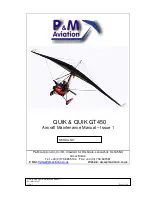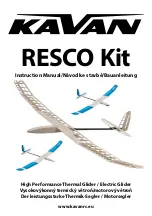
14
from the spiral dive in a controlled manner. Let the glider decelerate for one or two turns by
applying outer brake and/or weight shift.
B-stall
To quickly lose altitude without straining your body with G-force you can use the B-stall. Reach
up to the B-risers just below the maillons and twist your hands while gently pulling. It will be
difficult at first, but become lighter the more you break the aerofoil. Once pulled, do not release
immediately. The glider needs to settle into a stable B-stall before releasing. On exiting the B-
stall the Bolero Plus has a very gentle dive without deep stall tendencies. We advise you to
release the B-stall symmetrically with both hands in a decided manner.
Full stall, dynamic stall
This is an extreme manoeuvre and there should never be any need to perform one.
Do not take wraps with your brakes before entering a full stall. Keep your hands close to your
body during the stall, and lock them under your harness seat plate if necessary. In a stable full
stall, the canopy will oscillate back and forth. Before releasing the stall, raise your hands
slightly and evenly to fill the glider with air. If possible, let the brakes up when the glider is in
front of you to avoid excessive surge. The Bolero Plus will slow down the surge on its own, but
you may counter brake the dive briefly for comfort if needed and then let up the brakes to
regain airspeed. Be careful to not stall the glider again when damping the surge.
Never attempt a stall and then change your mind and release the brakes, as the glider will surge
radically.
Deep stall (parachuting, stable stall)
The Bolero Plus does not have a tendency to get into nor stay in a deep stall. Should this
nevertheless occur, put your hands on the A risers and push forward to gain speed. On some
modern harness/accelerator setups, you can reach the speedbar without using your hands. If so,
push the speedbar. Never try to steer out of a deep stall.
You can recognise a deep stall by the glider getting "mushy" and the airflow around your ears
decreasing. This situation is usually achieved by flying in turbulence or exiting a deflation with
too much brakes applied.
Steering without brakes
If a brake is not operational for some reason, you can steer the Bolero Plus with the D-risers.
Add steering input by weight-shifting in your harness. Be careful not to steer too much with the
riser to avoid any possibility of a spin.
Aerobatics
The Bolero Plus is not designed for aerobatics. Besides the inherent risks, extreme manoeuvres
of any kind place unnecessary stress on the glider and effectively shorten its lifespan.
Summary of Contents for Bolero Plus
Page 20: ...20 Line Plan...







































